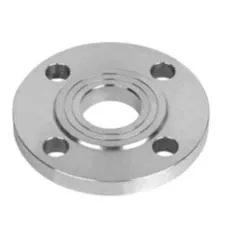-
Cangzhou Yulong Steel Co., Ltd.
-
Phone:
+86 13303177267 -
Email:
admin@ylsteelfittings.com
- English
- Arabic
- Italian
- Spanish
- Portuguese
- German
- kazakh
- Persian
- Greek
- French
- Russian
- Polish
- Thai
- Indonesian
- Vietnamese
- Zulu
- Korean
- Uzbek
- Hindi
- Serbian
- Malay
- Ukrainian
- Gujarati
- Haitian Creole
- hausa
- hawaiian
- Hebrew
- Miao
- Hungarian
- Icelandic
- igbo
- irish
- Japanese
- Javanese
- Kannada
- Khmer
- Rwandese
- Afrikaans
- Albanian
- Amharic
- Armenian
- Azerbaijani
- Basque
- Belarusian
- Bengali
- Bosnian
- Bulgarian
- Catalan
- Cebuano
- China
- China (Taiwan)
- Corsican
- Croatian
- Czech
- Danish
- Esperanto
- Estonian
- Finnish
- Frisian
- Galician
- Georgian
- Kurdish
- Kyrgyz
- Lao
- Latin
- Latvian
- Lithuanian
- Luxembourgish
- Macedonian
- Malgashi
- Malayalam
- Maltese
- Maori
- Marathi
- Mongolian
- Myanmar
- Nepali
- Norwegian
- Norwegian
- Occitan
- Pashto
- Dutch
- Punjabi
- Romanian
- Samoan
- Scottish Gaelic
- Sesotho
- Shona
- Sindhi
- Sinhala
- Slovak
- Slovenian
- Somali
- Sundanese
- Swahili
- Swedish
- Tagalog
- Tajik
- Tamil
- Tatar
- Telugu
- Turkish
- Turkmen
- Urdu
- Uighur
- Welsh
- Bantu
- Yiddish
- Yoruba

Sep . 14, 2024 11:34 Back to list
bending square steel tubing
Bending Square Steel Tubing Techniques and Considerations
Bending square steel tubing is a common practice in various industries, particularly in construction, automotive, and manufacturing. This process is crucial for creating structural components and frameworks that require specific angles and shapes to maximize strength and aesthetic appeal. Understanding the techniques and considerations involved in bending square steel tubing can lead to better quality products and enhanced performance.
When bending square steel tubing, the first step is to choose the right material
. Steel tubing comes in various grades and thicknesses, and the choice will depend on the required structural integrity and application. For instance, lighter grades may be suitable for non-load-bearing structures, while heavier grades are essential for structural components that must support significant weight.The most common methods for bending square steel tubing include rotary draw bending, induction bending, and press braking. Each method has its own advantages and is suitable for different applications. Rotary draw bending is widely used for precise bends and is ideal for applications where appearance matters, as it produces smooth, consistent curves. Induction bending, on the other hand, is effective for creating larger bends without compromising the integrity of the steel, making it suitable for larger structures. Press braking is typically used for forming sharp bends and is more straightforward but can be limited in terms of the degree of bend.
bending square steel tubing

There are several critical factors to consider when bending square steel tubing. The internal radius of the bend, the wall thickness, and the overall dimensions of the tube all play significant roles in determining the quality of the bend. Incorrect calculations can lead to kinks, fractures, or other deformities, compromising the strength of the finished product.
Additionally, the use of proper tooling and equipment is essential to achieving high-quality bends. Specialized dies and tooling can help ensure that the tubing maintains its shape and integrity during the bending process. It's also vital to take into account the material's properties and to perform any necessary pre-heating for thicker materials to avoid cracking.
In conclusion, bending square steel tubing is a fundamental process that requires careful consideration of materials and techniques. By understanding the variables at play, manufacturers can produce durable and aesthetically pleasing components that meet the demands of various applications. Proper technique and equipment selection are key to ensuring the success of the bending process.
Latest news
-
ANSI 150P SS304 SO FLANGE
NewsFeb.14,2025
-
ASTM A333GR6 STEEL PIPE
NewsJan.20,2025
-
ANSI B16.5 WELDING NECK FLANGE
NewsJan.15,2026
-
ANSI B16.5 SLIP-ON FLANGE
NewsApr.19,2024
-
SABS 1123 FLANGE
NewsJan.15,2025
-
DIN86044 PLATE FLANGE
NewsApr.19,2024
-
DIN2527 BLIND FLANGE
NewsApr.12,2024
-
JIS B2311 Butt-Welding Fittings LR/SR 45°/90° /180°Seamless/Weld
NewsApr.23,2024











